Astronomers using the National Science Foundation’s Robert C. Byrd Green Bank Telescope (GBT) have discovered a huge “superbubble” of hydrogen gas rising nearly 10,000 light-years above the plane of our Milky Way Galaxy. The gas may be driven by supernova explosions and the intense stellar winds from an unseen cluster of young stars in one of our Galaxy’s spiral arms. This giant gas bubble contains about a million times more mass than the Sun and the energy powering its outflow is equal to about 100 supernova explosions. The superbubble is nearly 23,000 light-years from Earth and is estimted to be between 10-30 million years old. The astronomers discovered it by combining numerous smaller images made with the GBT into one large image.
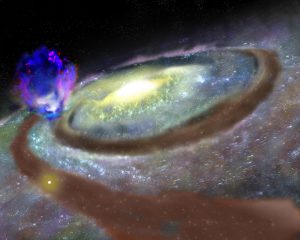
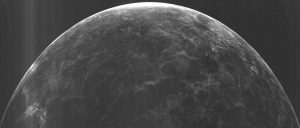
Arecibo-GBT Image of Venus
This is a radar image of the planet Venus made by transmitting a signal at 13 cm wavelength from Arecibo and using the GBT to detect the reflection off its surface. Brighter parts of the image indicate a rougher surface, while dark regions are smoother (on centimeter to meter scales). Many features, including mountain ranges, volcanic domes, and craters can be seen. The resolution of this image varies from 1 to 5 km. Investigator(s): Donald Campbell, Jean-Luc Margot, Lynn Carter, and Bruce Campbell
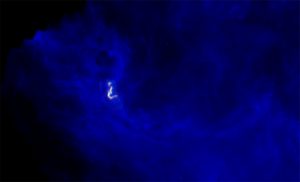
Stars Forming Together in Barnard 5
The B5 complex (red and green; radio images taken with the VLA and GBT) seen within its neighborhood, embedded in dust (blue) as seen with ESA’s Herschel Space Observatory, in infrared light.
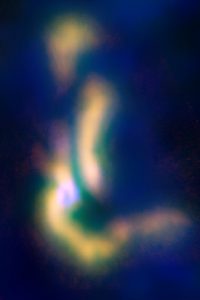
A Multiple-Star System Forms in Barnard 5
The Barnard 5 complex of gas is in the process of becoming a multiple-star system. B5 is a molecular cloud located in the constellation Perseus, approximately 800 light-years away. It contains one young protostar and three dense condensations that astronomers say will collapse into stars in the astronomically-short period of 40,000 years. Astronomers discovered that filaments of gas in the cloud are fragmenting, and the fragments are beginning to form into additional stars that will become a multiple-star system.
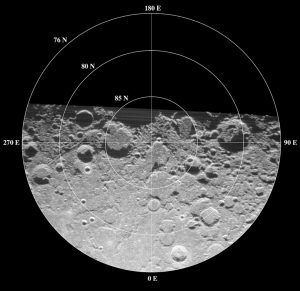
North Pole of the Moon
Radar maps can look like optical images, but they represent the amount of energy reflected back toward the transmitter by any given part of the Moon’s surface. The Arecibo Telescope’s radar wavelength of 70 cm penetrates 10 meters or more into the very dry lunar surface. When it bounced back to the Green Bank Telescope, (GBT), it reveals variations in the abundance of rocks larger than about 10 cm in diameter and differences in the chemistry of rocks that form the Moon’s crust.
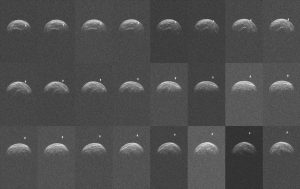
Radar Image Collage of Asteroid 2004 BL86
Collage of radar images of asteroid 2004 BL86 made by the Green Bank Telescope from radar transmitted from NASA’s Goldstone Deep Space Network antenna.





